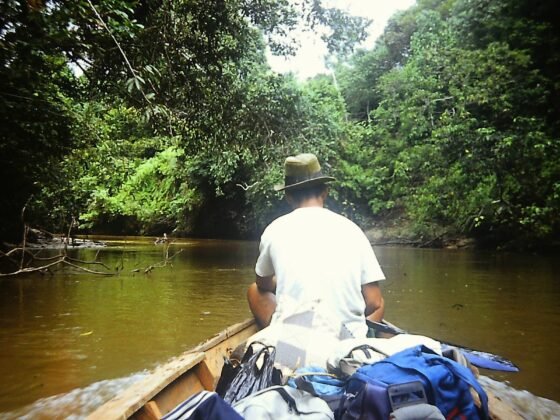
There’s nothing more iconic when it comes to exploring the waterways than kayaking. Kayaking has had a surge of popularity recently, mostly because of the fact that it’s a fun way to connect with the beauty of nature, and how much of a workout it can be. It’s made even better when it’s done with a few of your closest friends.
If kayaking appeals to you at some level, but have no idea where to start, then we’re here to help you out.
Secure a kayak
Before you can even think about the basics of kayaking, you’ll need to find a good place to get one. If you already have a friend that has a spare to lend you, then that’s great. Outside of borrowing from a friend, you can also rent a kayak, join a tour that lends you one for the duration of it, and of course, buying one yourself.
There are a huge variety of kayaks to choose from, the two main categories being flat water kayaks, for calm waters, and whitewater kayaks, designed for less than calm waters. Kayaks are then further subdivided into different types, from recreational, to touring kayaks, to pedaling kayaks, and each has their own advantages and disadvantages.
While you can choose a one-man kayak, if you want to enjoy kayaking with a companion, tandem kayaks are usually the best way to go. There are a lot of factors that go into choosing kayaks, and if you need help with choosing one, there are guides online that list the best tandem kayaks by rating, so it gets easier to pick one.
What to wear
Naturally, it wouldn’t do to get into the water without wearing the right types of clothing. Choosing what to wear while riding a kayak is pretty straightforward. You generally choose what to wear based on the water and air temperature. You can choose to wear regular swimwear if it’s not too cold, but wearing a wetsuit is important if the temperature drops below 60 degrees Fahrenheit. Wearing safety equipment such as a kayaking helmet and a personal floatation device is also very important.
Adjusting your kayak
For you to optimize how you use your kayak, it is best to adjust it accordingly. A well-adjusted kayak has the potential to improve your comfort and stability while you paddle up and down the waterway.
It’s highly suggested that you make your adjustments on dry land, and focus on the three points of contact while you are in it:
• Your backside should fit snugly on the backrest of the seat
• Your feet should touch the foot pegs properly, and your knees should bend slightly
• Make sure that your bent knees should touch either side of the cockpit
Ensuring that you have these three points perfectly maximizes not only your comfort levels, but also your steering control. A well-adjusted kayak also lessens your chance of capsizing.
There is a lot to learn when it comes to kayaking, and it’ll take quite a bit of time and effort, but with the help of your friends and a bit of elbow grease, you should be kayaking like a pro in no time. Focus more on progress, not perfection, and remember to have fun doing it.












